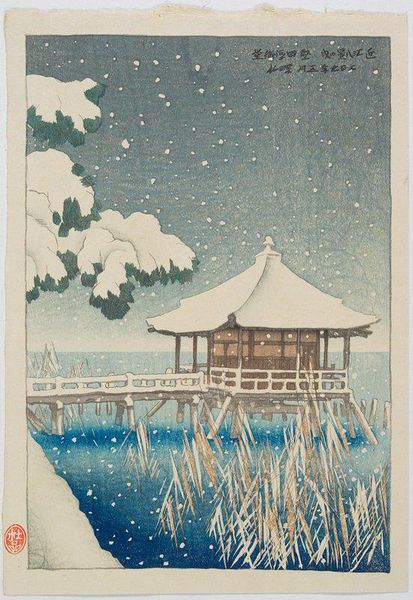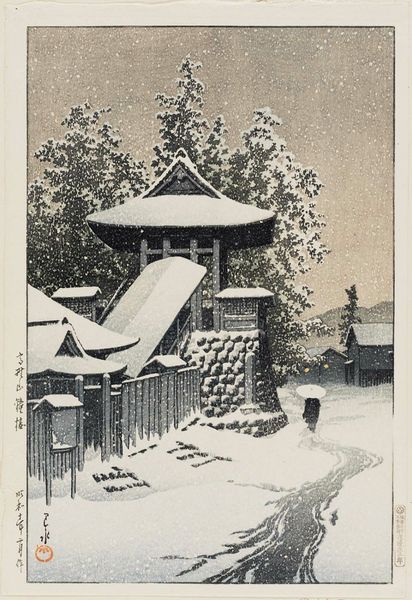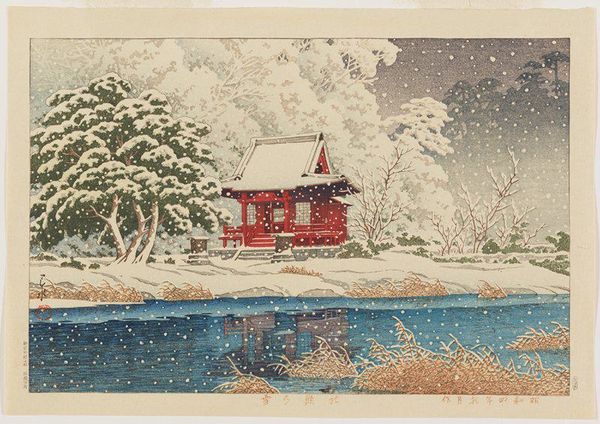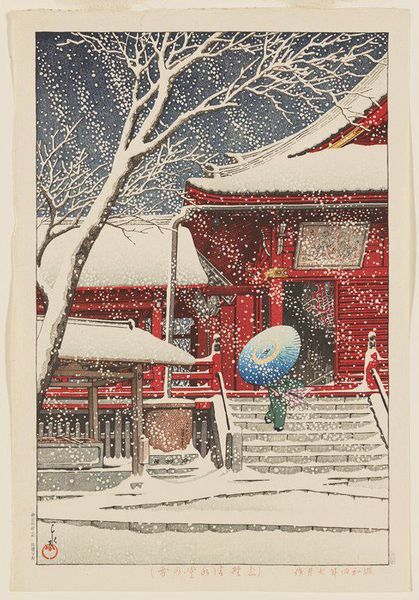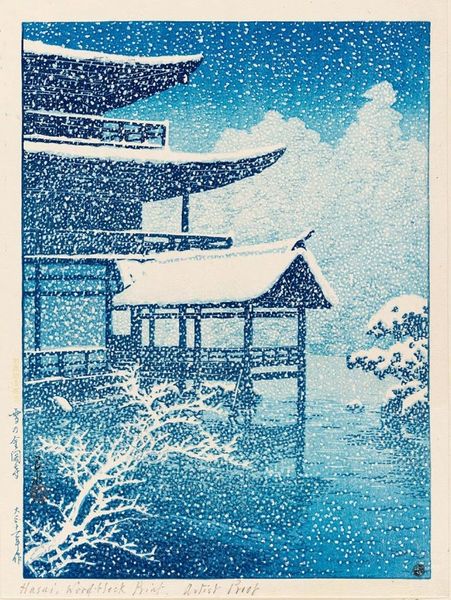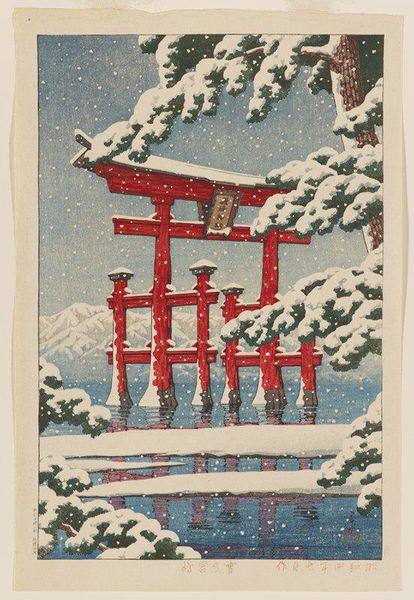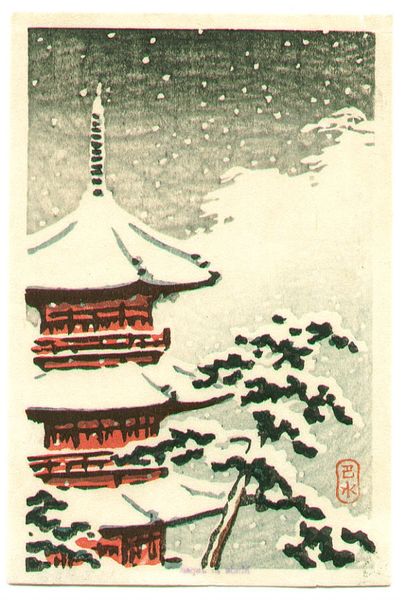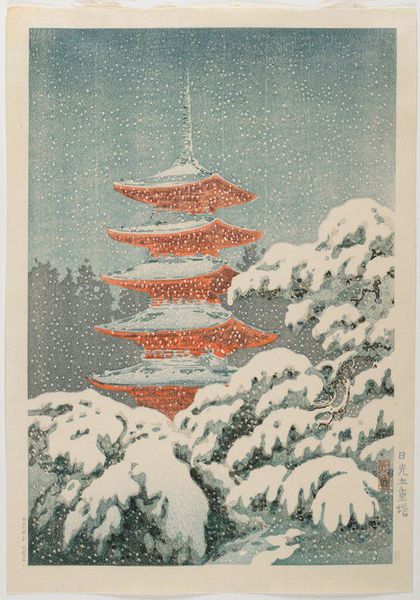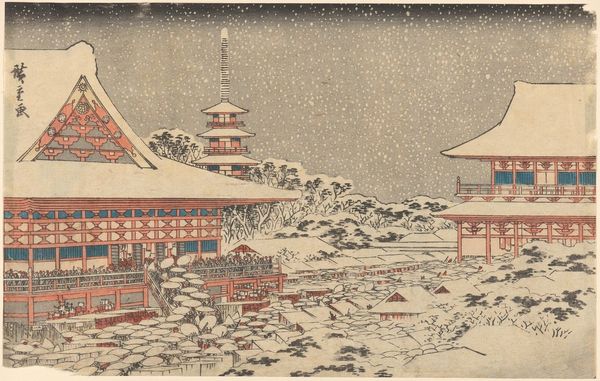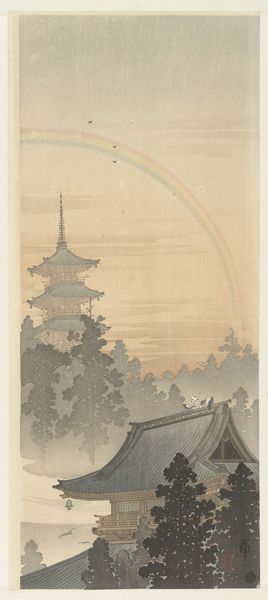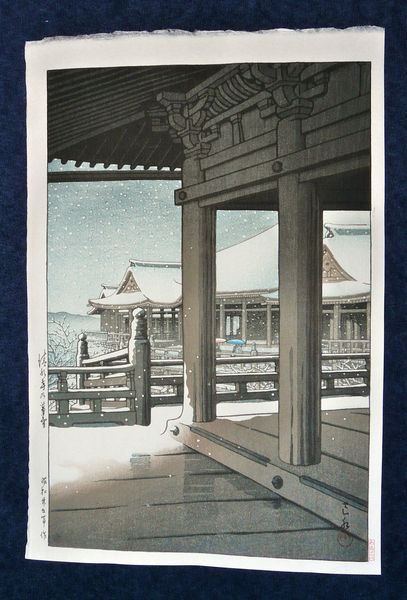
Dimensions: 14 3/16 × 9 3/8 in. (36.1 × 23.8 cm) (image)23 × 19 × 1 1/2 in. (58.42 × 48.26 × 3.81 cm) (outer frame)
Copyright: No Copyright - United States
Editor: We’re looking at Hasui Kawase’s "Spring Snow," a woodblock print from 1932, currently housed at the Minneapolis Institute of Art. I’m immediately struck by its tranquility, despite the heavy snowfall. The deep blues and whites create a really calming scene. How do you interpret this work? Curator: The tranquility you sense is interesting, isn't it? Consider that Kawase was working in a period of intense socio-political upheaval in Japan, a time when traditional values were clashing with rapid modernization and increasing militarism. This print, and others from the shin-hanga movement, wasn’t simply depicting a scene; it was actively constructing an image of an idealized, pre-modern Japan. Editor: So, it's almost a form of resistance, portraying an idealized past amidst turbulent times? Curator: Precisely! Think about the choice of imagery. The temple, the traditional clothing, the serene landscape... these are all visual cues meant to evoke a sense of timelessness and cultural identity. We can even see it as a subtle critique of the increasingly Westernized and militaristic present. Notice the two figures – what stories do you think are interwoven here? Editor: It's almost like they're spectators, quietly observing the changing world around them. Like they know more. I wonder how gender plays a role in the reading of this scene… Curator: Excellent question. Were these figures afforded a kind of quiet strength during the pre-war era? How are they active contributors to national identity in times of war, both physically and metaphorically? Considering this print in the context of wartime propaganda forces us to consider women as cultural preservers and protectors. Editor: This completely reframes my understanding of the artwork. Curator: It is complex, isn't it? Looking at "Spring Snow" only on a surface level offers immediate gratification in the landscape's peaceful nature. To investigate socio-historical context and undercurrents can reveal an abundance of insight into the production, interpretation, and complex theoretical discussions behind Kawase’s intention.
Comments
minneapolisinstituteofart almost 2 years ago
⋮
Not a single nail was used in the construction of the 13 meter high stage of Kiyomizu Temple that was assembled in the batten structure (kakezukuri), known since about the 13th century.
Join the conversation
Join millions of artists and users on Artera today and experience the ultimate creative platform.

